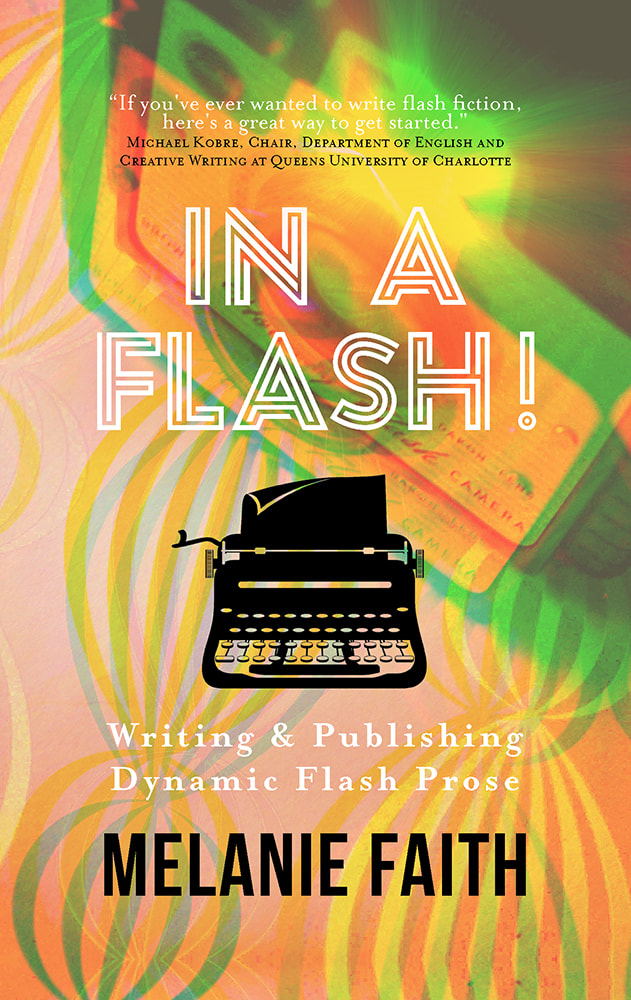Published today (12/12/17) at Women on Writing's awesome blog! Enjoy.
"Four Myths about Outlining Your Novel"
By Melanie Faith
photo by: Danielle MacInnes
Published today (12/12/17) at Women on Writing's awesome blog! Enjoy.

photo by: Danielle MacInnes
“Put down your phone. It’s Listen Time, Dad.” Her green eyes twinkle.
You have to chuckle when your kid parrots you back to you. Molly’s a good kid. Gets good grades—better than I ever did, does the drama club thing, has a part-time job at Fancy Feet. The eyebrow ring I’m not so fond of, but I got a Hammer Time tattoo at sixteen, so it could be worse. Far worse. Like that dude who drops by and sits on the porch, waiting like a puppy for her return. Even if I’m sitting there.
I chuck my phone into the cup holder. “Ok, Molls. What’s up?” I grin, “Let me guess: you broke up with Kadence.”
Molly rolls her eyes. Pretty and green, like Sarah’s always were. Still are. Still are, I think with a sigh.
“No, I am not breaking up with Kadence.”
Photo by: Andrew Worley



"The photo shows a man, neither tall nor short, neither stout nor thin, in a pale blue button-up shirt. He is somewhat younger than middle-aged, but based on the receding hair line and gray at his temples and in his goatee, not that much younger. His tie is perfectly straight, but his eyes are half-closed. The silver top of a small belt buckle on his trousers glints. Because of the sun, there’s a reflection of the man’s face in the glass, like he’s staring at his doppelganger, or looking into his future self with a serious expression. A cleaned-off mahogany table beside him. On the walls behind him, some kind of wooden, built-in cupboard, doors closed. In his hands: a pink-and-blue vase."



Best,
Melanie

The Power of the Prompt

"76 Rabbits out of a Top Hat, or: The Quirky Tale of How One Poem became a Whole Book"
Ever notice how some things just multiply. From one to many, seemingly of their own accord. Take weeds in a garden. Ants in the cupboard. Emails in an inbox. Pounds on a despicable scale.
Or poems in a collection.
Yesterday was release day for my poetry book. This Passing Fever is a collection set in 1918, the last year of WWI. It was also the year of the horrendous influenza epidemic that took myriad lives the world over and tore some families apart while it brought others in communities closer.
I say poems—plural—now, but it didn’t start out that way. Originally, I wrote a single poem that I divided into three sections during the second draft. The poem was two-pages long and included three characters that, at that time, didn’t have names.

image by: Gary Bendig, Unsplash.com
So, what happened that I expanded the poem into a whole series of historical poems? Here was my thought process and creative arc:
· Stay open to surprises. While fact-checking a detail in my initial poem before submitting it to a journal, I stumbled upon a jump-rope rhyme that kids used to sing on the playground in 1918. It was such an authentic detail that I immediately took it for a spin, exploring a question that jumped into my head and out through my pen: What would be the life story of a girl singing this rhyme?
That new poem launched not only my main character, Alma Donovan-Smith, but a whole new impetus: If Alma had a story to tell, what about other children in her school? What about the teacher? What about the students’ parents? What about other people in the town, like the shopkeeper, the clergy, neighbors and friends?
· Just because the work starts in one format or genre and length, no need to stay locked into place. I ended up taking apart the initial poem and writing more poems about the villagers in a two-week period. It felt like they were individually introducing themselves to me. Of course, once I knew Alma, I wanted to learn more of her story, and she didn’t disappoint. Four or five poems in, the idea hit me to flash forward and have Alma herself tell some of her own story, as part of an oral-history interview project with her grandson in 1958.
If I had remained stubbornly determined that what I’d written was just one poem, what a loss it would have been to the narrative and to me. I learned a lot about handling multiple POVs and story strands while dividing the pieces and omitting some that didn’t work.
Ultimately, feel free to take apart your draft, even after the very last edit (as Walt Whitman did with numerous editions of his literary masterpiece Leaves of Grass). Add new details. Explore details you stumble across either while researching or that seem to find you as a gentle thought.
· Go organic. Let the work inform your writing and editing decisions. When I wrote the initial poem, I didn’t move back and forth through time from 1918. Yet, as I wrote more and more individual pieces and delved into both personal and cultural details of the town, I began to feel that a more compelling way to present the narrative in verse was to fast forward through several time periods.
Sometimes when we start a project, we have just the outermost glimmer of what the piece will become, and that’s not only fine but magical. Each piece will have its own innate format and logic. Stay aware and curious about the material as you write and edit. Respond as you go to how the piece moves and (re)shapes itself.
So, instead of one poem, I have 76-pages worth…and a richer, more evocative exploration of my initial subject than if I’d stopped with the first poem.
Try this prompt! Poems and flash pieces are short by nature, but linked works have the potential to be greatly expanded in details, characters, settings, and more. Pull up a piece you thought was a one-off and examine it with new eyes. Ask yourself: Where are there possibilities to expand this narrative? What might another character say or do about the initial piece? Try flashing forward or backward in time period or setting. Take 20 minutes to write a companion piece, without stopping.
You might just find, like rabbits out of a hat or chips from a bag, one leads to another and another and…

Image by Victor Larracuente, unsplash.com